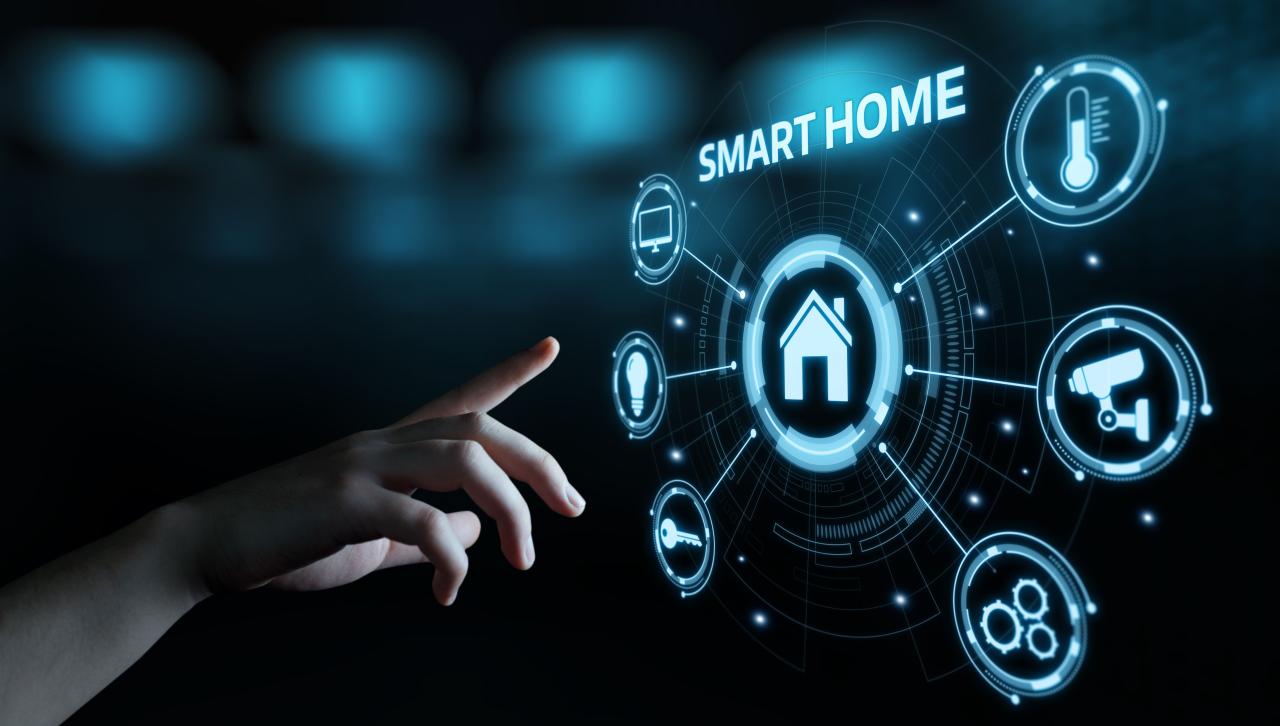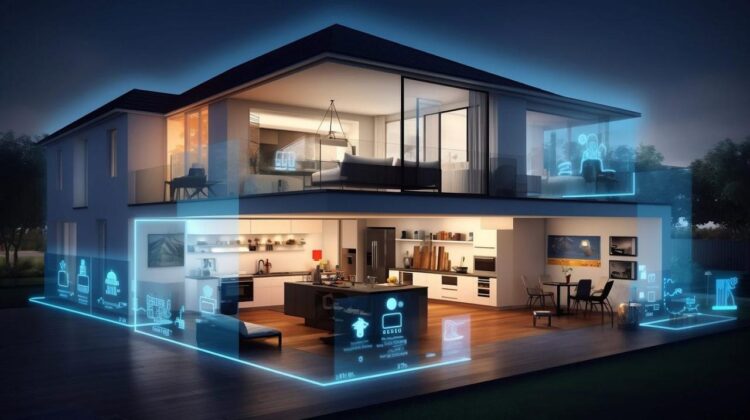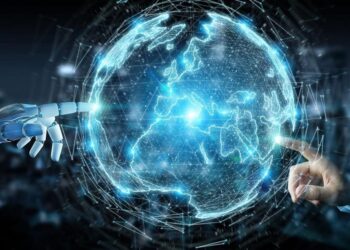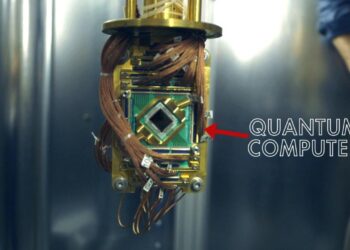The concept of the Smart Home has evolved far beyond novelty gadgets and simple remote-controlled appliances. We are now entering the era of truly intelligent habitation, where devices don’t just respond to commands, but anticipate needs, learn complex behaviors, and operate autonomously to optimize comfort, security, and energy efficiency. The shift is being driven by powerful local Artificial Intelligence (AI) processing, standardized communication protocols, and the convergence of various sensory technologies into a cohesive, proactive ecosystem. The new generation of smart home devices is moving intelligence from the cloud to the edge, transforming houses into responsive, self-managing entities.
This comprehensive guide delves into the technological leaps driving the “smarter” evolution of connected living, explores the critical role of new interoperability standards, examines the essential security and privacy implications, and charts the future of the truly autonomous home.
The Intelligence Shift: Edge AI and Autonomy
The most significant change in smart home technology is the migration of processing power from remote cloud servers to the devices themselves—a paradigm known as Edge AI.
A. Local Processing for Speed and Reliability
Moving AI processing to the device (the “edge”) eliminates dependence on constant, high-speed internet connectivity for basic functions.
- Reduced Latency: Decisions are made instantaneously on the device. For critical functions like security monitoring or emergency response (e.g., detecting smoke or a break-in), this near-zero latency is vital.
- Improved Reliability: The system remains operational and intelligent even during internet service outages, ensuring core automation routines continue uninterrupted.
- Faster Response Time: Complex algorithms, such as facial recognition for unlocking a door or identifying specific pets, execute locally in milliseconds, making the user experience seamless and responsive.
B. Proactive and Contextual Automation
Next-gen devices use local sensor data and learned patterns to initiate actions without direct user input.
- Behavioral Learning: AI algorithms constantly analyze patterns over time—when the user wakes up, the temperature preferences during different seasons, and typical evening routines—to build a personalized model of the household.
- Contextual Awareness: The system combines data from multiple sensors (temperature, light, motion, humidity, air quality) to understand the context of a situation. For example, the smart thermostat doesn’t just lower the temperature because the door opened; it lowers the temperature because the door opened and the security system detected the last occupant leaving and the outside weather forecast is hot.
- Anticipatory Actions: The ultimate goal is anticipation. The house pre-cools the living room 15 minutes before the owner’s usual arrival time, or gradually brightens bedroom lights 5 minutes before the scheduled alarm to facilitate a smoother waking process.
C. Self-Diagnosis and Maintenance
Smarter devices are now equipped to monitor their own health and proactively seek solutions.
- Predictive Failure: Sensors in appliances (e.g., HVAC units, refrigerators) monitor vibration, energy consumption anomalies, or subtle changes in operational noise. AI uses this data to predict component failure before it happens.
- Automated Service Ticketing: The system automatically generates a maintenance request with a detailed diagnostic report for the homeowner or service provider, scheduling service appointments based on user availability.
- Firmware Integrity Checks: Devices constantly monitor their own security posture, flagging unusual network activity or unauthorized configuration changes to prevent exploitation.
The Interoperability Solution: Embracing MATTER
For years, the smart home industry was plagued by fragmentation, with devices from different manufacturers unable to communicate effectively. The arrival and rapid adoption of the Matter standard is the single most critical factor enabling the next generation of cohesive smart homes.
A. The Unified Communication Protocol
Matter is an open-source, royalty-free connectivity standard built and maintained by the Connectivity Standards Alliance (CSA), supported by industry giants like Apple, Google, Amazon, and Samsung.
- Simplified Pairing: Matter drastically simplifies the setup process. Any Matter-certified device can be easily added to any Matter-compatible network (via Wi-Fi, Thread, or Ethernet) using a single QR code scan, eliminating app-specific pairing processes.
- Local Device Control: Matter heavily leverages local protocols (like Thread and Wi-Fi) to ensure devices communicate directly with each other and with the local hub, supporting the shift to Edge AI and reducing cloud dependency.
- Platform Agnosticism: Users can mix and match devices and control them all using their preferred platform (Apple Home, Google Home, Amazon Alexa, Samsung SmartThings) simultaneously, finally putting the user, not the manufacturer, at the center of the ecosystem.
B. The Role of Thread Networking
Matter’s success is intrinsically linked to the adoption of the Thread mesh networking protocol.
- Self-Healing Mesh: Thread creates a low-power, self-healing mesh network, where every device (running on mains power) acts as a signal repeater, expanding the network’s range and ensuring robust connectivity throughout large homes.
- Low Power Consumption: Optimized for battery-powered devices (like motion sensors or door locks), allowing them to run for years on a single battery, a massive improvement over traditional Wi-Fi.
- Foundation for Interoperability: Thread is the physical backbone that allows Matter’s application layer to function efficiently and locally, creating fast and reliable machine-to-machine communication.
C. Impact on the Ecosystem
Matter standardizes communication across core device categories: lighting, locks, thermostats, blinds, sensors, and TVs. This standardization accelerates innovation by lowering the entry barrier for smaller manufacturers. Instead of dedicating engineering time to five different protocol stacks, companies can focus solely on innovating the hardware and the Edge AI that powers it.
 Smart Security and Safety: From Passive to Active Defense
Smart Security and Safety: From Passive to Active Defense
The next generation of smart security is moving from simply recording events (passive) to actively mitigating threats (active).
A. Intelligent Biometric Access Control
Door locks and security cameras are now leveraging Edge AI for sophisticated identification.
- Facial and Voice Recognition: Devices store and process biometric templates locally, providing instant, secure authentication for family members and authorized guests.
- Anomaly Detection: Systems learn typical household movement patterns, automatically generating alerts only when activity deviates significantly from the norm (e.g., distinguishing between a tree branch motion and a person loitering).
- Package and Object Recognition: Cameras can identify specific objects (e.g., recognizing a package delivery versus an unauthorized drop-off) and apply contextual actions, such as notifying the user or activating a spotlight.
B. Environmental Hazard Mitigation
Smart devices are merging to create a layered defense against environmental threats.
- Coordinated Fire Response: A smart smoke detector doesn’t just sound an alarm; it instantly communicates with the smart lighting to illuminate exit paths, unlocks smart doors for emergency services access, and shuts down the HVAC system to prevent smoke spread.
- Water Leak Protection: Sensors placed near water sources can detect minor leaks, and the system can automatically command a smart water shut-off valve to close the main water line, preventing catastrophic damage.
- Air Quality Management: Integrated air quality monitors (detecting volatile organic compounds or fine particulates) automatically trigger ventilation systems or air purifiers to maintain optimal air health, even when the home is unoccupied.
Energy Optimization and Sustainability
The new intelligence allows the smart home to become a major player in reducing utility costs and promoting global energy efficiency.
A. Predictive Load Management
The smart home is becoming a sophisticated energy manager that interacts directly with the utility grid.
- Optimized Appliance Scheduling: AI learns the utility’s dynamic pricing schedule and automatically runs heavy load appliances (like laundry machines or EV charging) during off-peak, low-cost hours.
- Solar and Storage Integration: For homes with solar panels and battery storage, the system predicts future energy needs and weather patterns, deciding whether to store solar power for evening use, sell excess power back to the grid, or draw grid power when it’s cheapest—all in real-time.
- Zonal Climate Control: Smart thermostats manage individual zones based on occupancy (detected by motion sensors) and thermal inertia, heating or cooling only occupied areas just enough to hit the target temperature precisely when needed, minimizing wasted energy.
B. Appliance and Lighting Synergy
New devices integrate intelligence into everyday functions.
- Adaptive Lighting: Lights adjust color temperature (circadian lighting) and brightness not just based on ambient light levels, but on the activity detected in the room (e.g., switching to focused bright light when typing is detected, or dim warm light when the TV is on).
- Smart Kitchen Management: Refrigerators track inventory, predict food spoilage based on storage time, and suggest recipes based on available ingredients and dietary preferences, significantly reducing food waste.
 The Crucial Future of Privacy and Security
The Crucial Future of Privacy and Security
The complexity of a hyper-connected, AI-driven home raises significant concerns regarding data security and user privacy that must be addressed by new standards and technologies.
A. Data Minimization and Local Storage
The shift to Edge AI is primarily a privacy win, but governance is required.
- No Cloud Data Harvesting: By processing sensitive data (facial recognition, voice commands, behavior patterns) locally, the need to upload petabytes of personal information to third-party cloud servers is eliminated.
- Encryption Standards: All device-to-device communication, even on the local network, must adhere to strict, end-to-end encryption protocols (mandated by Matter) to prevent local network interception.
- Auditable Data Usage: The system should provide users with simple, transparent dashboards detailing exactly what data each device collects and how long it is stored locally.
B. Authentication and Patching Policies
Security becomes a matter of life-cycle management for every device.
- Secure Over-the-Air (OTA) Updates: All certified devices must support secure, automatic firmware updates to patch vulnerabilities, ensuring the security of the smallest sensor is maintained over its lifespan.
- Revocation and Decommissioning: Robust mechanisms are needed to securely decommission and wipe a device before it is sold or discarded, ensuring no residual personal data or authentication keys remain on the hardware.
- Unified Authentication: With Matter, the core authentication keys are centrally managed by the user’s chosen ecosystem controller, simplifying the management of credentials and reducing the surface area for attack.
C. The Autonomous Home Policy Challenge
The ultimate autonomous home raises new ethical and legal questions.
- A. Liability: Who is responsible if an Edge AI-driven vehicle charging system causes a fire, or if a smart lock mistakenly grants access to an intruder? Clear legal frameworks are needed to address liability in autonomous systems.
- B. Systemic Risk: As entire neighborhoods become interconnected and optimized, systemic vulnerabilities (e.g., a massive coordinated attack on a single Matter vulnerability) pose a risk to utility grids and public safety.
The smarter home is already here, driven by the quiet power of Edge AI and the unifying force of the Matter standard. This intelligent future promises unprecedented convenience, safety, and efficiency. However, realizing its full potential demands a parallel commitment to robust security, transparent data governance, and proactive policy-making, ensuring that the next generation of connected living is not just smart, but also secure and trustworthy.












